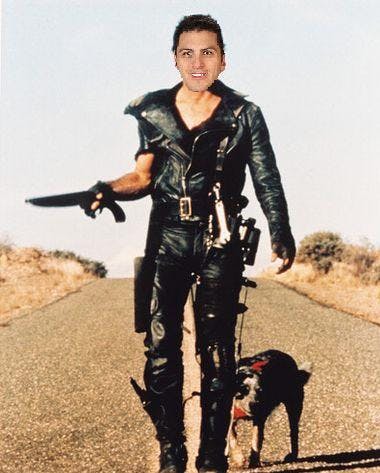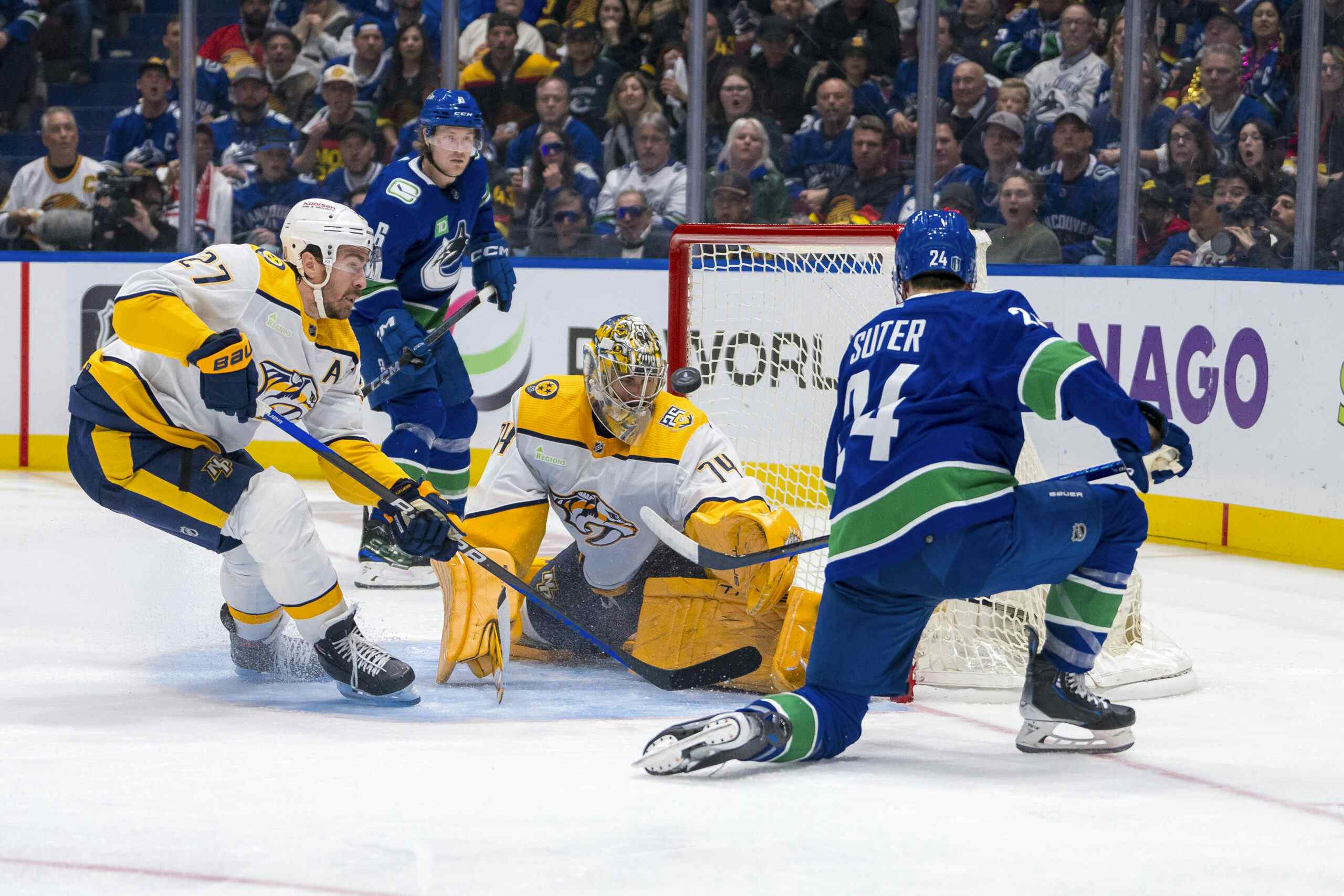Mad Max: The Fourth Line Warrior
By Jeff Angus
12 years ago
What qualities make up an ideal fourth liner in hockey? If you polled fans, words like grit, toughness, tenacity, energy, and aggressiveness would likely be tossed about. The famed Grind Line, featuring Kirk Maltby, Kris Draper, and Darren McCarty, helped Detroit win multiple Stanley Cups. All three wouldn’t have looked out of place in a third line role, but they fit best when skating together on Detroit’s energy unit.
The Canucks haven’t had a set fourth line unit since Artem Chubarov and Matt Cooke skated with Trevor Letowski in 2002-03 and Jarkko Ruutu in 2003-04. Over the past six seasons, the list of failed experiments is very, very long, especially at the center ice position. Generally, a "good line" requires a strong spine, so having a good centerman tends to be the most important. Taking faceoffs, more time spent handling the puck, and increased defensive responsibilities are three major reasons as to why. For whatever reason, the Canucks have struggled to replace Chubarov. Here are some of the more notable flops since the lockout:
Ryan Johnson, a player who on paper had a prototypical fourth line skill set (unquestioned heart, faceoff prowess, penalty killing expertise), but was unable to contribute anything aside from an inordinate about of goals against.
Byron Ritchie, who somehow blackmailed Alain Vigneault into seeing some power play time.
Tommi Santala, who was hyped as the best fourth line center ever to grace Vancouver with his presence (one goal and 30 games later, an opinion that didn’t really stand up).
Alex Bolduc, who somewhere along the line acquired Ales Hemsky’s brittle shoulders (though none of Hemsky’s puck skills) through osmosis, leading to a number of trips to the injured reserve.
Chubarov was a workhorse who contributed a lot to the team. We often hear that fourth line players should be good enough where they “don’t hurt the team.” If a fourth line was good enough that it didn’t hurt a team (in other words, outperformed whatever line it was up against), it wouldn’t be a fourth line. Hockey, like all sports, is a zero-sum game. There is one puck on the ice, and only one team can win. If a fourth line is able to play 10 minutes per game with a goal differential of close to zero, it should be considered a success. For the past while, Vancouver has been unable to find a combination to provide them this luxury, until now.
Although we are only 11 games in, the current fourth line looks to be the best unit assembled since 2004, and maybe even before. The key has unquestionably been Maxim Lapierre, who could easily play in a third line role. In the playoffs last season, he managed to be an effective defensive option when matched up against the likes of Toews, Sharp, Fisher, Legwand, and Pavelski. His acquisition trickled through after the official trade deadline had passed, but he was an integral part of the Canucks march to the cup. Just think, if he hadn’t been acquired, the bottom two centers in the playoffs would have been Cody Hodgson (before a summer of beneficial training) and Bolduc (see above). Lapierre was dispatched from Montreal because he didn’t like playing on the right side, as he’s much more comfortable and effective at center. He never established himself with the Ducks, either. One man’s trash (in this case, Montreal and Anaheim) is another’s treasure, as they say.
An argument could be made that Lapierre has been the most consistent Vancouver skater this season.
He’s big, strong, hard on the puck, and a lot faster than given credit for. He has a decent shot, good hands, and covers a lot of ice in a short amount of time. If he keeps playing this well, he will likely supplant the struggling Manny Malhotra on line three.
On the right side, Dale Weise has looked very good as well. He was waived by the Rangers after getting lost in the training camp shuffle. The Canucks pro scouting staff obviously did their homework on the 23- year-old – Weise has few holes in his game. He has the tenacity and energy that is typical in fourth line players, but he has also shown flashes of offensive creativity with some nice one-on-one plays and rushes up the ice. Weise had 28 goals two years ago in the AHL, and he scored 18 in only 47 games there last season. It is still early, but projecting Weise to take the next step into a third line physical winger isn’t out of the question. Victor Oreskovich won the roster spot by default at training camp (Owen Nolan’s groin succumbed to father time, and Steve Pinnizzoto injured his shoulder), but he didn’t bring a whole lot aside from size and speed.
Some of the more notable right wingers to skate on the fourth line include:
Rick Rypien, who brought a ton of energy and scored a few timely goals. Unfortunately for him, he didn’t get to play with a center like Lapierre.
Guilliame Desbiens, who showed enough in his single NHL game (one in which I attended, Desbiens was about three steps behind the play the entire night) that he never got another look.
Mike Brown, who could skate really fast into the boards and landed about three percent of the punches he threw.
The final member of the fourth line this season is Aaron Volpatti. Volpatti is the weakest player of the three in terms of hockey skill, but he is filling the role of physical winger unafraid to drop the gloves quite well. Unlike previous big bodies on the fourth line, he’s a quick enough skater to get in on the forecheck. He can handle a pass coming out of the zone, which immediately sets him above some of his predecessors, as well. He’ll have some competition for the left wing spot once Steve Pinizzotto and Byron Bitz are healthy, though.
Some left wingers who have played in the spot before Volpatti:
Tanner Glass, who wasn’t the same player after suffering a rib injury last season. He could skate, hit, and was willing to drop the gloves. With a center like Lapierre, he likely would have been a much better offensive player. (Sensing a theme, yet?) Glass may unfortunately be remembered for his open net whiff against the Bruins in game five last postseason.
Darcy Hordichuk, who was a solid fighter and a really good interview. He struggled at times to play a regular shift, but the team didn’t protect his ice time all that well. He also took the most well-earned minor penalty in recent memory – two minutes for absolutely crushing a wandering Marty Turco, who was trying to make a play out by the in-zone faceoff dot. He also had a shift for the ages a few years ago in the playoffs.
Brad Isbister, who performed exactly as well as most people not named Dave Nonis expected him to. How is that for a positive spin?
In summary, it is obvious that a quality good fourth line is integral to the success of a hockey club and Vancouver’s hockey fans should be excited about the great start from their new 4th unit.
Maxim Lapierre isn’t just a quality fourth liner, he’s also got wicked taste in hockey bloggers. Here he reminds you who to vote for in the #replacethekb contest.
Recent articles from Jeff Angus





